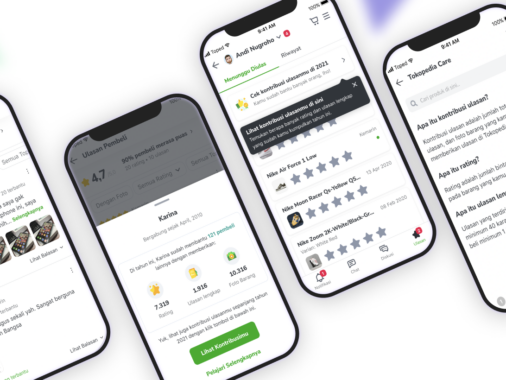The Life & Death of Personas and Their Journeys
Personas and journey maps are often rolled out with great fanfare and enthusiasm.
The user experience team has completed months of qualitative and quantitative research to craft a work of art representing the archetype user: They decide to proclaim her Sally.
At first, the organization is overjoyed to hear all about Sally and her experiences. They showcase her persona and journey in numerous meetings with stakeholders and are commended for their hard work.
Unfortunately, most personas and journey maps are quickly forgotten amongst other organizational priorities and are rarely maintained. A common reason why these documents are abandoned is that they eventually no longer represent the current customer or the latest business objectives. The vast majority of personas and journey maps are static, passive documents, that while attractive, do not play an active role in the product or service innovation lifecycle.
Most Personas and Journey Maps are Dead Shortly After Arrival

So, what ultimately killed the persona called Sally? There were several likely causes of death including:
- Lack of organizational alignment: No one really believed in who she was, what she wanted, and how the organization would meet her goals.
- Neglect: No one took the time to “take care” of Sally or regularly see if her needs were being met.
- Isolation: No one “visited” Sally anymore and she was separated from the members of the organization who could really advocate for her.
This article describes the common pitfalls associated with these projects and offers practical advice that your team can use to ensure a healthy long life for your personas and journey maps.
Perspective, Understanding, and Alignment
Personas and journey maps require involvement and input from stakeholders across business units and company functions. Stakeholders in an organization can include a lot of people including product designers, business analysts, product managers, and executives. Forgetting to include a key stakeholder in the process can put your persona’s life at risk.
Involve stakeholders in the creation of new personas
Each type of stakeholder can bring different perspectives and unique insights in the creation of your personas. Those representing client support are often on the front lines and can shed light on frequent customer complaints or requests. Executive stakeholders can help to identify key business objectives that will need to align with Key Performance Indicators (KPIs). Product managers operate at the intersection of business and user needs, and have insights into the short and longer-term plans for product roadmaps.
From the start, there are opportunities for your persona to start off life in a supportive environment for their best chances of long-term success.

Action items:
- Hold a kickoff meeting with all stakeholders to help them understand what personas and journey maps are and how they can help to create a better experience for their users.
- Schedule interviews with stakeholders to better understand their priorities, goals and identify who they see as the target users. Conduct individual interviews to eliminate group think and influencers.
- Conduct a workshop with stakeholders from across departments to brainstorm and discuss the various users that they serve. Larger working groups can be used to gain a broader perspective and make sure that all gaps in knowledge and understanding are addressed. This can sometimes be the first time that these people have talked about the customer and their needs in the same meeting.
- Present the results from the stakeholder research back to the original group of stakeholders to align on who the target users should be and what aspects of the persona to focus on.
After conducting these activities your stakeholders will be both informed and engaged with the persona and journey map process.
Design is in the Details
Most personas and journey maps loosely describe each type of individual and associated touchpoints. This can provide stakeholders with a general, high-level understanding of the persona and their journey, but it is insufficient for making informed decisions. Often the root of the problem with personas being abandoned is their lack of relevant details.
Let’s get to know Sally Smith
Overall, the Sally persona does a good job helping us to get a feel for what she is like and a few aspects of her life. However, by performing a post-mortem on the persona we can see a few early causes of death:
- There are a lot of irrelevant details about Sally’s life that aren’t useful to the product team and distract from the most insightful information.
- Some of the information about Sally is overly generic in an effort to generalize the type of person she represents (e.g. wanting to “stay healthy”).
- Some of the information is actually too specific and can’t easily be generalized (e.g. personality traits).

Sally’s journey as a patient
The Sally persona represents a type of person, not a product. In reality, Sally would be experiencing many products and services that each have their own unique contexts. For example, let’s consider Sally as a patient at a local hospital. In this journey as a patient, we can represent what Sally would be experiencing before, during, and after her medical treatment.
 This journey map does a good job representing the key milestones, touchpoints, emotions, and experiences that Sally would have with this hospital. It also highlights opportunities for the UX/CX team to improve her experience within specific parts of her journey. One of the flaws that this journey map suffers from is information overload. All of the information is presented at the same level and doesn’t help stakeholders to know how to best interpret or make use of the findings.
This journey map does a good job representing the key milestones, touchpoints, emotions, and experiences that Sally would have with this hospital. It also highlights opportunities for the UX/CX team to improve her experience within specific parts of her journey. One of the flaws that this journey map suffers from is information overload. All of the information is presented at the same level and doesn’t help stakeholders to know how to best interpret or make use of the findings.
Journey insights should peel away like an onion, revealing deeper and deeper layers of customer interactions, habits, perceptions, and pain points. This would include micro-moments that break down higher-level touchpoints that can be more easily mapped to very specific goals and actions.
Setting Goals, Solutions, Actions & Targets
Stakeholders may become disengaged from Sally’s journey over time because it doesn’t closely align with the user’s goals and how the organization will address them in the short and long term. Rarely are journey maps revisited to examine the pain points that everyone originally agreed Sally has.
- Have we addressed any of Sally’s pain points?
- How do we know that they have been adequately addressed?
- If we haven’t addressed them yet, when will we do it?
To make a persona and their corresponding journey meaningful, we need to identify specific objectives and outcomes that the organization cares about.
Goals: What does the persona want to achieve?
Solutions: What solution will help the persona to achieve their goal?
Actions: What does the persona need to do to achieve their goal?
Targets: What specific outcomes will demonstrate the success (or failure) of a persona’s goal?
The journey map document should be interactive, allowing users to peel away layers of a particular touchpoint to see more of the details of a particular customer’s interaction. An effective journey map is tied to actions/solutions that are directly associated with the customer’s touchpoints. Actions (embodied in sketches, wireframes, priority lists, etc.) need to be linked and accessible directly by clicking on specific touchpoints to reveal solutions.
Action items:
- Closely examine the existing assets created for the journey map and persona. Work with the team to align on the goals, solutions, actions, and targets for each touchpoint.
- For the journey, identify touchpoints that should be further expanded and work with the team to drill down to the lowest common denominator for each persona’s journey. Make sure that the team commits to solutions for all identified pain points and ideally align them to the product roadmap.
Socialization & Engagement
It’s extremely easy for documents like personas and journeys to get lost in a sea of project deliverables. Many are shared digitally and end up in a file folder on a corporate network that is rarely accessed. Some end up getting printed out but eventually end up in the recycle bin. Personas need to be seen and their journeys frequently reviewed for them to be part of product design conversations.

Action items:
- Find a permanent home for your personas and journey maps to live. For a physical space, work with your facilities administrator to find a visible and highly trafficked place to hang them up. In a digital environment, work with your IT administrator to have a visible place on the company’s wiki or portal page.
- Include a slide in any new project kickoff deck highlighting the persona and journey map.
- Show the personas and journey maps in all new employee onboarding orientation sesssions.
Keep stakeholders engaged with gamification techniques
Journey maps and personas are a great way to have the team initially align with the user’s needs and opportunities. Unfortunately, once this understanding takes place, there is rarely a reason to revisit these documents.
Gamification is a proven method for increased engagement and motivation for employees. Dynamic visual indicators can be introduced to both personas and journey maps to indicate the level of attention that stakeholders are paying to specific users and their touchpoints. The Tamagotchi effect is the development of emotional attachment with machines, robots, or software agents. Imagine the portrait of a persona dynamically changing over time (e.g. smiling, looking bored/disinterested, frowning, etc.) to reflect KPIs associated with that user type. Just like in a video game, we can keep stakeholders engaged when they really start to care about the health of the persona. The areas on a journey map could also change to different levels of brightness/saturation (e.g. dull and/or faded to indicate little engagement) or imagery/icons could look broken or worn out depending on how much users have interacted with them.

Action items:
- Utilize best practices in interaction design and gamification to create a new concept for displaying and interacting with the personas and journey maps.
- Conduct a small validation test to make sure that the proposed concept resonates with the target stakeholders and make refinements to the concept based on feedback.
Performance & Optimization
If other methods of engagement fail or are less effective, accountability can be a powerful motivator. Once stakeholders understand that there are KPIs associated with keeping Sally happy, they can insist that product teams execute and report on the progress of improving the persona’s journey experience.
It can be difficult to identify individuals that match a persona’s profile based on the high-level information typically provided in a persona document. To effectively track the performance of a persona, it is critical to identify who matches this persona and who does not. Consider what attributes your organization is able to track and identify about your personas such as:
- Status: Guest, subscribed user, premium member, etc.
- Longevity: Number of years as a registered user
- Proficiency: Newbie, intermediate, power user, etc.
- Engagement: Frequency of signing into their account and using specific features
- Demographics: Age, gender, income, education, geographic region, etc.
The metrics for measuring a persona and touchpoints on a journey map also need to align closely to the customer’s goals, not just what data is most easily collected (e.g. NPS). Using an incorrect measurement can generate misleading results that may steer stakeholders in the wrong direction.
Keeping track of metrics relevant to Sally
It is critical to identify metrics that truly reflect the customer’s experiences and that map directly to customer touchpoints and business goals. Ensure that measurements give you both the what and why. Metrics like NPS and satisfaction scores are one-dimensional, and can often be misleading, especially when used with a highly contextualized representation such as personas and journeys.
Action items:
- Create a dashboard that allows stakeholders to view data at varying levels of detail, across different personas and touchpoints.
- Integrate data sources into your personas and journey maps to show real-time (if possible) metrics that show the status of KPIs.
- Set up regular touchpoints (e.g. weekly, monthly, quarterly, etc.) with stakeholders to review KPIs associated with each persona.
- Review KPIs that the team is currently utilizing as well as identify opportunities for other available metrics and how to tie those to specific touchpoints.
Governance & Evolution
Revisit existing personas and journey maps with stakeholders
A lot can change within an organization over the course of a year including changes in staffing and business goals. Over your persona’s lifetime, there will be stakeholders that come and go within the organization. New individuals will not have been part of the creation of the persona or their journey, and may come with fresh perspectives on who the customer is and what they need. Product managers tend to have a very short-term memory of features that were built to address specific pain points on the journey map. Executives may have moved onto new business opportunities that are no longer relevant to the originally created journey.
The entire team should periodically get together to review these documents and determine if the information they contain is still accurate and relevant to the team’s goals. One way to do this is to print out the documents and put them on a wall for everyone to review. Post-It notes can be used to add comments about specific parts of the journey or persona, and col0r-coded dots can be used for items that should be changed (i.e. red dots), or are still important and valid (i.e. green dots). Tools like Miro or Whimsical can accomplish the same thing for remote teams.
#gallery-1 {
margin: auto;
}
#gallery-1 .gallery-item {
float: left;
margin-top: 10px;
text-align: center;
width: 50%;
}
#gallery-1 img {
border: 2px solid #cfcfcf;
}
#gallery-1 .gallery-caption {
margin-left: 0;
}
/* see gallery_shortcode() in wp-includes/media.php */
Action items:
- Hold a stakeholder workshop at least twice a year to reevaluate each document’s content and relevancy.
- Determine whether a persona should be expanded, branched out, or “retired” if no longer relevant.
Establish a governance strategy
A common reason why these documents are abandoned is that they eventually no longer represent the current customer or the latest business objectives. Diffusion of responsibility and shifting roles are often the culprits for outdated and forgotten documents.
A governance strategy needs to be put in place to assure that there are deliberate plans to keep the documents accurate and relevant. At least one individual should be identified as the keeper of the documents with identified support by individuals from each of the major business unit teams.
In addition to making sure that the documents reflect current and accurate information, it is also essential for these documents to have a logical inception point for all business activities (both large and small). This can include everything from high-level strategic business decisions down to what kind of instructions should be provided on a new process to customers.
Action items:
- Work with the team to identify the right individuals to manage the various documents; This could be a designer, researcher, business analyst, or product owner.
- Created or modify an org chart to show who will own, add to, review, approve, etc. specific touchpoints within the journey maps.
- Conduct workshops to train individuals on how to appropriately modify the persona and journey map files and templates.
- Create an action plan that includes trigger points for when a stakeholder needs to initiate changes to any of the persona or journey map documents as well as a process map for how those changes should be accomplished (i.e. what will inform the change, who will make the change, how will it be validated, etc.).
Conclusion
I still believe that there is hope for personas like Sally to have a better life and help the organization better understand and design for her needs. In order for personas and journey maps to have longevity, there needs to be strong buy-in and sustained value for the entire organization. It takes consistent effort to advocate on behalf of the user and leverage KPIs that show the ROI that comes with optimizing the customer’s journey.
`






 This journey map does a good job representing the key milestones, touchpoints, emotions, and experiences that Sally would have with this hospital. It also highlights opportunities for the UX/CX team to improve her experience within specific parts of her journey. One of the flaws that this journey map suffers from is information overload. All of the information is presented at the same level and doesn’t help stakeholders to know how to best interpret or make use of the findings.
This journey map does a good job representing the key milestones, touchpoints, emotions, and experiences that Sally would have with this hospital. It also highlights opportunities for the UX/CX team to improve her experience within specific parts of her journey. One of the flaws that this journey map suffers from is information overload. All of the information is presented at the same level and doesn’t help stakeholders to know how to best interpret or make use of the findings.






